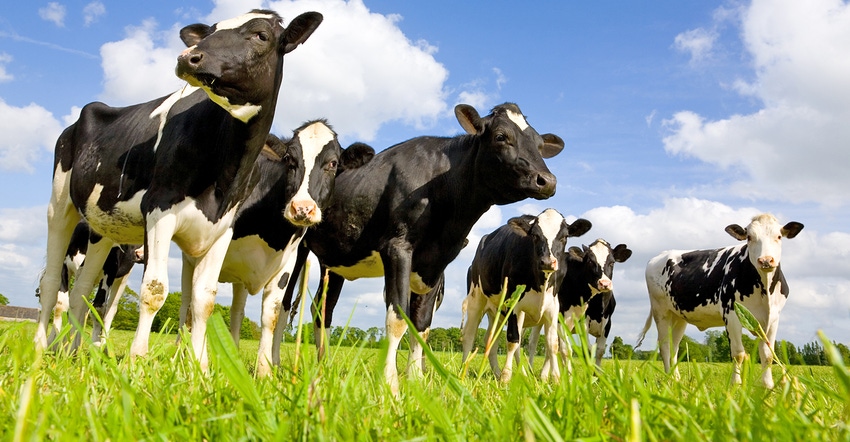
The outlook for milk prices continues to improve.
“It now looks like the Class III price could reach near $16 in June, and will be in the mid- to high $16s by July and for the remainder of the year,” says Bob Cropp, University of Wisconsin Extension dairy economist. “The average for the year could end up near $15.60, compared to $16.17 last year. Dairy margins [returns over feed cost] will improve, but the improvement is now being dampened some by higher feed prices.”
Positive report
USDA’s report for April milk production was positive for milk prices. Compared to April 2017, milk production was just 0.6% higher this year. Milk cow numbers declined slightly, down 2,000 head from March, the second consecutive monthly decline. April milk cow numbers were just 8,000 head, or 0.1%, higher than a year ago. Milk per cow for April increased much less than the normal trend, at just 0.5% higher than a year ago.
According to USDA, April milk production was lower than a year ago in major dairy states. Decreases were: New York, 2.4%; Pennsylvania, 1.7%; Michigan, 1.4%; Minnesota, 2.2%; and Wisconsin, 0.6%. There were relatively small increases in these states: California, 0.4%; Arizona, 1.1%; Iowa, 1.6%; and South Dakota, 1.8%. Relatively strong increases occurred in these states: Idaho, 3.5%; Texas, 7%; Colorado, 9.9%; Kansas, 5.1%; and Utah, 5.5%.
May saw increases in dairy product prices.
“If these dairy product prices can hold, average May prices compared to April on the CME could average about 4 cents per pound higher for butter, about 14 cents for cheddar barrels, 4 cents for 40-pound cheddar blocks, 8 cents for nonfat dry milk and 3 cents dry whey,” Cropp says. “As a result, the May Class III price would be near $15.25, compared to $14.47 in April and the low of $13.40 back in February.”
Good domestic sales and dairy exports have improved the dairy stock situation and added strength to dairy product prices. Compared to a year earlier, March 31 stocks of butter were just 0.4% higher, with American cheese slightly lower by 0.4%. But other than American cheese, stocks were 14.2% higher, bringing total cheese stocks 5.2% higher.
“The strength in nonfat dry milk prices is surprising, since stocks were still 20.9% higher than a year ago,” Cropp notes. “Dry whey stocks, which have been relatively high, were 3.5% lower than a year ago.”
The prices of butter, cheese, nonfat dry milk and dry whey remain lower than and competitive with world market prices, according to USDA.
U.S. dairy exports set a record high in March on a total volume basis, surpassing the previous record set in March 2014. Compared to March a year ago, butterfat exports were 180% higher, cheese 9% higher, nonfat dry milk/skim milk powder 38% higher and dry whey 19% higher. March exports as a percent of milk production on a total solids basis was 17.3%, compared to 14.1% a year ago. The outlook for dairy exports appears positive for the immediate months ahead, Cropp says.
“Milk prices will continue to strengthen, possibly topping out in October or November,” he says. “The degree of strength will continue to depend upon the level of milk production and dairy exports. The summer weather, quality of forages harvested, and the condition of the corn and soybean crop that will impact feed costs will have a bearing on milk production this summer, fall and into winter.”
About the Author(s)
You May Also Like






